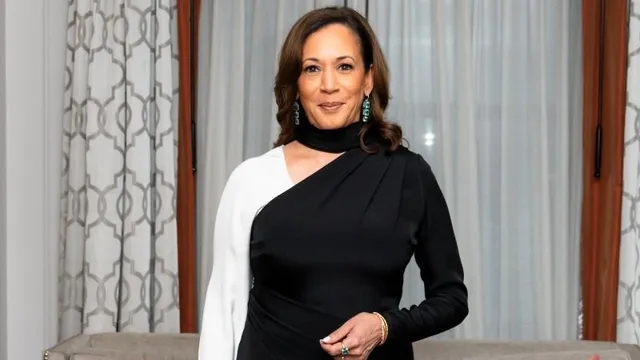
Kamala Harris stuns at the Met Gala in Off-White gown
2025-05-06 10:23- Kamala Harris attended the Met Gala in New York on May 5, 2025, alongside her husband Doug Emhoff.
- She wore a custom Off-White gown celebrating Black dandyism as part of the gala's theme on Black tailoring.
- Despite criticism regarding her attendance amidst economic issues, Harris emphasized the role of art in shaping cultural and political discourse.
Express your sentiment!
Insights
On May 5, 2025, Kamala Harris, the former Vice President of the United States, made a notable appearance at the Met Gala, an upscale charity event held in New York. This marked her first time attending the Gala, and she arrived alongside her husband, Doug Emhoff. Harris chose a striking black-and-white gown designed by Off-White, crafted with attention to Black dandyism, a cultural motif celebrated at this year's event. Although Harris and Emhoff opted to skip the red carpet, they were still captured in photos showcasing the elegance and significance of Harris's look. The gown, described as having an asymmetrical cape sleeve, pleated skirt, and long scarf, was meant to represent timelessness and confidence, embodying the spirit of the Costume Institute's exhibition focused on Black tailoring and style. Harris's presence at the gala coincided with her gradual return to the public eye after a period of lower visibility post her presidential campaign. Following her recent speeches criticizing the Trump administration, her attendance at such a high-profile event garnered attention. Critiques arose following her appearance, with some questioning the appropriateness of a politician participating in a lavish event while many Americans were facing economic hardships. Harris highlighted the importance of artistic expression in shaping culture and politics, claiming that art captures the mood of the public and creates opportunities for dialogue. This sentiment tied into the gala's theme, celebrating the resilience and creativity of Black culture through fashion. The event aimed to address the interplay of race and identity within fashion, reflecting on historical elements of resistance and pride in the Black dandyism movement. On the same night, Harris was also promoting her engagement in various upcoming fundraising events, further solidifying her transition into post-vice presidency and possibly foreshadowing her future political endeavors.
Contexts
Black dandyism is a rich cultural expression that emerged in the 19th century, rooted in the African diaspora's response to systemic racism and societal marginalization. It significantly manifested in urban centers, where Black individuals sought to assert their identity and pride through fashion, socialization, and performance. The dandyism movement was characterized by its emphasis on elegance and refinement, with men and women showcasing their individuality and socio-cultural status through meticulously curated attire. This style was not merely a fashion statement; it was a bold declaration of self-respect and agency amidst an oppressive social fabric that often sought to dehumanize Black individuals. In cities such as New Orleans, Paris, and London, Black dandyism flourished as members of the African diaspora adopted, adapted, and innovated elements of European fashion, infusing it with distinct cultural nuances. Prominent figures like the musician and writer Paul Laurence Dunbar and the renowned performer Josephine Baker became symbols of this movement, representing a blend of cultural pride and global recognition. The elegance exhibited by these individuals subverted the dominant narratives that painted Blackness as inferior, reframing it instead as a source of allure and sophistication, thereby challenging the existing socio-cultural stereotypes. Moreover, Black dandyism played a vital role in communal bonding and identity formation, serving as a social and political commentary on class, race, and gender. As dandyism intertwined with the broader cultural and political movements of the time, it became a mode of resistance against the racist ideologies prevalent in society. The fabric of these communities often revolved around social clubs and gatherings where individuals expressed their aesthetic sensibilities, fostering a sense of belonging and solidarity. This not only allowed for personal expression but also contributed to a collective identity that was sharply in contrast to the prevailing racial prejudices. The legacy of Black dandyism continues to influence contemporary culture, evident in modern fashion, music, and art. Today's Black creatives often draw from the historical roots of dandyism, reclaiming and redefining elegance and style as a means of empowerment. Events such as fashion shows, cultural festivals, and digital media outlets have revitalized interest in the dandy aesthetic, showcasing its evolution while honoring its historical significance. By embracing their heritage and style, contemporary Black dandyism persists as both a tribute to the resilience of the past and a declaration of identity for future generations.